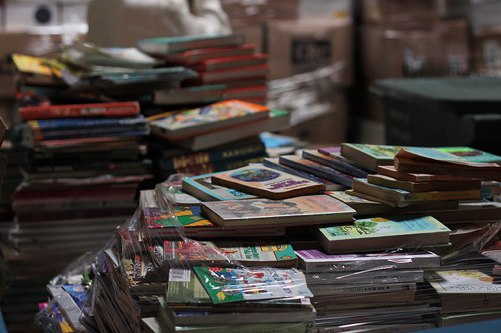Required reading
By Spicer Matthews
 Banned Books Week is not taking place right now.
Banned Books Week is not taking place right now.
It happens in the fall, and librarians everywhere welcome it with a twisted glee. They can be quite the rebels, those librarians. If you don’t believe me, read how how librarians kept “Stupid White Men” from becoming pulp (regardless of your feelings on Michael Moore, trust me, the story’s a good one). But back to Banned Books Week: Librarians celebrate it, making displays of all the books that have been banned or challenged. They relish in showing how some of the most popular books in history, even accepted masterpieces, have been deemed by some to be unfit for human consumption.
Not surprisingly, many of the books on the list were written for young audiences. Deciding at what age certain themes and language become appropriate is tricky enough on a case-by-case basis, never mind trying to apply standards to an entire generation.
I was lucky. As the offspring of one of those subversive librarians, I was not allowed to see R-rated movies until I was in high school—but I could read whatever I wanted. When I bothered to think about this parenting strategy, I realized it may have been lacking in logic. I could read Stephen King books at age 10, but not see the (typically underwhelming) movies based on those books until I was practically driving? Yeah.
But maybe there was some logic behind it. After all, I read voraciously then and still do today. Whenever I see “banned books” lists, I’m stunned by how many of my personal favorites are there. The very titles that infected my imagination and infiltrated my views of the world are repulsive to some. Perhaps it’s that the books that have the most ingenuity, the ones that can most radically change our perceptions, are just too frightening for some. For me, and scores of others (many of these books are award-winners), that’s what makes them magnificent.
Here, in no particular order, are some of my very favorite banned books, with brief commentary:
The Bridge to Terabithia
I remember wanting to inhabit this book. I remember crying at the end. Mostly, I remember reading it over and over again.
Lolita
It’s not a love story. It is, however, an amazing accomplishment of character and language.
The Giver
Just after college, I worked in a school as part of a volunteer committee. One day the other volunteers—all mothers of high schoolers—were discussing “The Giver,” a required book in one of the English classes. “I love that book!” I gushed. The mothers looked at me like I’d just said I loved burning small children with a branding iron. Turns out, they didn’t share my adoration. One mother claimed her high school daughter had had nightmares for months after reading it (I read it in fifth grade, but okay). Another pursed her lips and shook her head. A few years later, the same school drew national media attention when a parent (not one of the mothers I knew) refused to return a book to the school library, deeming it so offensive it should be burned.
Twilight
Yeah, yeah, I know. The writing isn’t great, and maybe they should be banned for overuse of the word “smoldering,” but Stephanie Meyer is a genius at plotting. To those who would ban it, I can only summon a South-Park like “come on.” The kids are actually entirely well-behaved: They don’t drink, swear, do drugs or have sex before marriage. So they do lie—but only to save the lives of their loved ones and battle evil forces. People have a problem with that?
A Wrinkle in Time
The first time I tried to read this book, I found it boring and put it down. I guess I was naturally (albeit subconsciously) deciding what was too mature for me. A year or two later, I picked it up again and I don’t think I closed it until I was finished. I went on to read every Madeline L’Engle book I could find.